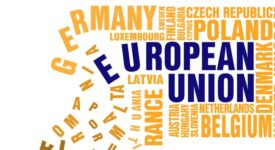Despite promising signs of a continuing global economic recovery in 2022, the African debt situation remains worrying. More than 20 low-income African countries were in debt distress or at risk of debt distress in autumn 2021 according to the International Monetary Fund (IMF). The good news is that while overall debt levels have generally risen, action requested by African governments from development finance institutions (DFIs) and multilateral lenders has meant many African countries have been able to support their economies without taking on too much additional private debt. The IMF has also allocated Africa $33 billion in special drawing rights (SDRs), providing an immediate liquidity boost without adding to the debt portfolio. At the same time, the G20’s short-term crisis management tool – the Debt Service Suspension Initiative (DSSI) – has just ended and its intended replacement – the ‘Common Framework for Debt Treatment beyond the DSSI’ – has been implemented far more slowly than originally envisaged with only Chad, Ethiopia and Zambia engaging with it so far.
LENDING DROPPING FROM A 2016 PEAK —- Over the past 20 years China has become the continent’s largest source of development finance and now accounts for about one-fifth of all lending to Africa. This lending, until recently, was concentrated in seven strategic or resource-rich countries – Angola, Cameroon, Djibouti, Ethiopia, Republic of Congo, Kenya, and Zambia – and peaked at $29.5 billion in 2016 before falling back in 2019 to $7.6 billion. Nonetheless China’s extensive trade and investment links with the region, as well as the importance of some of these borrowers, means it is an essential player in any African and global solution to excessive debt. China’s involvement in African debt varies considerably, both between countries and over time. Although in recent years it has been framed in the context of the Belt and Road Initiative (BRI), it has for the most part been uncoordinated and unplanned, and carried out by competing lenders with links to different elements of the Chinese state.
Rapid expansion in Chinese lending to resource-rich African states in the early 2000s, particularly oil producers such as Angola and the Republic of Congo, contributed to infrastructure development but was undermined by poor governance, forcing China to make further loans to buttress its African partners against the negative effects of resource dependence. In Kenya and Zambia, China’s lending for major infrastructure projects such as Kenya’s standard gauge railway has been undermined by bloated concepts, poor planning, and a parallel sharp rise in private sector debt. Lack of transparency over the precise nature of the terms which governments agreed to has led to intense domestic criticism and accusations China is seeking control over strategic assets. China’s lending to Djibouti and Ethiopia does indeed have strategic or geopolitical goals but the current situation is one in which leverage typically lies with the debtor rather than the creditor. More broadly, African ‘agency’ is a key factor in the current debt situation.
As the poor quality of much of its past lending has emerged over recent years, Chinese authorities have sought greater control over new development lending and required more attention to sustainability. Loans are generally now on a smaller and more manageable scale than before and ambitious strategic visions of linking central Africa to the BRI via integrated transport corridors appear to have been abandoned. With the introduction of a global development initiative in September 2021, there are indications China is moving to a ‘new development paradigm’ with a focus on supporting SMEs and human capital investments, green development, and an emphasis on foreign direct investment (FDI) flows rather than loan financing. This shift has been reinforced by China’s rethinking of its own domestic development strategy under the ‘dual circulation policy’ which puts more weight on domestic consumption as a driver for growth versus external demand as the latter has become less reliable. At the same time China is keen to preserve as much value as possible in what has already been lent, and also sustain its reputation in the developing world which remains a core supporter for Beijing on many UN-led platforms.
The result is China has cautiously moved away from a strong preference for dealing bilaterally with problem debtors. The Chinese state does not want to be a rule taker vis-à-vis the West on debt issues but increasingly appears to recognize that multilateral approaches – ideally on an ‘a la carte’ basis – can help manage both the pressures on its African partners and its own challenges. It therefore cautiously supported the DSSI for some African states when it launched in April 2020, and similarly the Common Framework when it was launched in 2021. However, the Common Framework’s slow implementation reflects four specific problems linked to China’s role. First is China’s uneasiness with the central and independent role played by the IMF in determining how much a country can afford to pay through its debt sustainability analysis (DSA). And second is the concern of public and private sector lenders in the West over a lack of transparency in the total amount of debt African countries borrowed from China. Third is a difference of view between the Chinese authorities and Western governments on exactly how burden sharing should be implemented between different types of official lending institution. And fourth is the differences between Chinese lenders and private sector lenders on the way in which any relief should be delivered – for example, the choice between maturity extension and reduced interest rates versus debt haircuts.
AFRICA MUST PUSH FOR PROGRESS — Sustained efforts have been made over the past year to try and resolve these issues, but progress has been slow. A necessary condition for further progress is that African nations clearly want this and so push for China and the West to reach consensus on implementation of the Common Framework. A joint initiative should comprise three elements. First, a broad-based ‘G20 plus’ dialogue focused on building a stronger framework to deliver Africa’s longer term external financing needs, building in part on the cooperation mechanisms created to deal with the immediate debt relief crisis with an emphasis on African voices. Second, a high-level political understanding on strengthened cooperation between the West, China, and other G20 lenders in relation to African debt and longer-term financing needs. Third, a technical program led by the G7/G20 finance tracks to address immediate problems in the Common Framework and related debt relief initiatives.
Such a package would not solve all the problems attached to multilateral debt relief. Some, such as those linked to China’s role in the IMF and the size of its quota, cannot be addressed through an initiative centered on international debt alone. Nor could it end competition between China and the West, and indeed within the West, over trade and investment links with Africa. This will continue, and it is in the interest of African borrowers that it does so too. But it would ensure that African countries which have unsustainable debt can address this burden through a longer-term framework which could provide substantial benefits, not just for themselves but also for their lenders. 2022 provides a window of opportunity to reach agreement on such a package and all sides would do well to take it.
‘Addressing Debt Distress in Africa’ — Expert Comment by Alex Vines, Creon Butler and Yu Jie — Chatham House / The Royal Institute of International Affairs.






